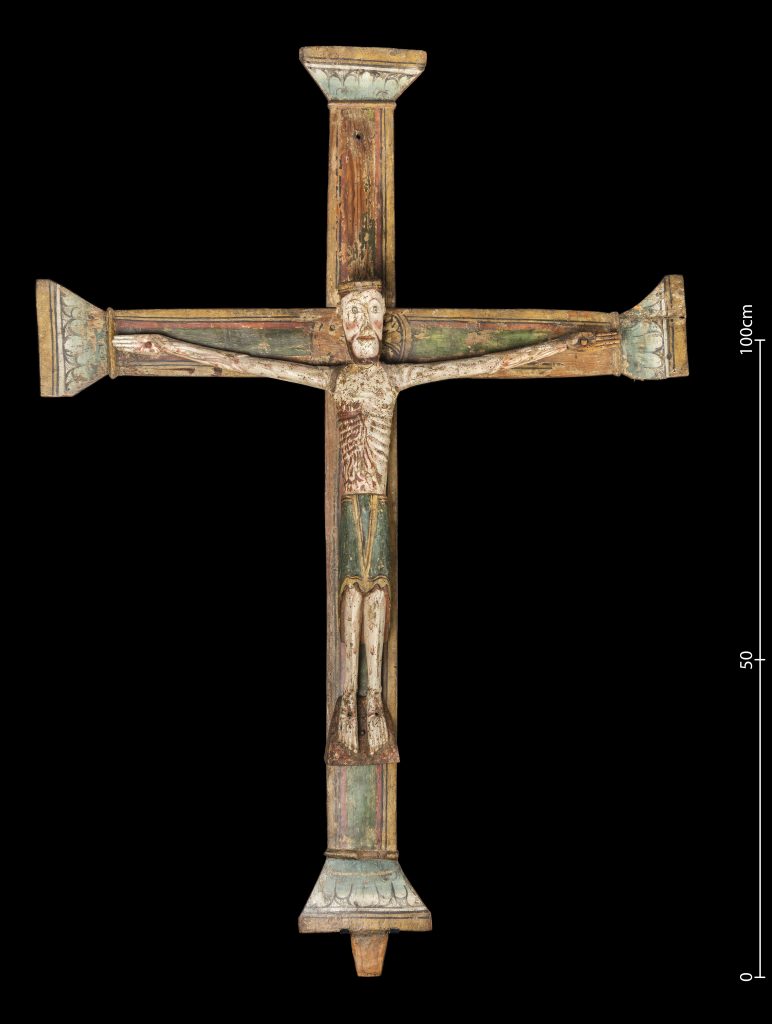
This crucifix is among the oldest in Norway and probably originated around the middle of the twelfth century. The slender figure maintains a standing position before the cross, its knees slightly bent, as was usual in the Romanesque style. Carved slits in his arms and breast evoke stylized ribs and muscles. Christ wears a green cloth around his waist that hangs down in a deep V-fold at the front. His feet are placed next to each other on a slanted support (suppedaneum), and his stretched arms point slightly upward. Christ’s face is characterised by a motionless gaze, and a thin moustache and beard are painted in black around his mouth. On his head rests a narrow crown or tiara. The ends of the cross are slightly wider and carry paintings of stylized leaves. The cross beams are painted in green, red and yellow. Blood flows painted on the arms, feet and breast are secondary.
Other examples of Romanesque Christ figures with a similar V-fold are found in Vinje (Telemark) and Hauge (Sogn), as well as in the Kulturhistorisk museum at the University of Oslo (from Grinaker, Oppland, inv. no. C7292, c. 1130). The crucifix was transferred to the Bergen collection from Leikanger in 1865. Several furnishings from the nearby stave church of Rinde, that was abandoned in 1858, had been assembled there, so it may have originally belonged to that church. Even though it might have functioned as an altar cross it more probably served as a triumphal cross in the chancel arch. The peg at the bottom of the cross may have been used to insert it in a cross beam.
Norway, c. 1150
From Leikanger (Sogn), originally in Rinde (?), in the museum since 1865
Pinewood (cross) and softwood (corpus) with traces of original polychromy
H 143 x W 104 x D 13 cm
Inv. no. MA 48